You may have heard - Fake Love, the experiential agency of The New York Times, is closing down. My heart goes out to all of the other shops working in experiential who have been affected by the pandemic.
For those that don't know, Fake Love was an award winning experiential agency founded in 2010, and I was Fake Love's Chief Creative Technologist and have been part of the business for a long time. In short, I loved the place and our team. As part of processing and moving on to the next chapter, I’d like to talk a little bit about what Fake Love has meant to me over the last decade of working there.
Fake Love was my first real job after finishing grad school in 2010. The founders, Josh Horowitz and Layne Braunstein, got my contact info from my friend Kyle McDonald. They reached out for some tech help for projections they were doing for a party for the launch of a new creative product for Microsoft. The party was live 5 days away from that first email. I didn’t even technically live in NYC yet, but I had just signed a lease, and had an air mattress. Here, look:
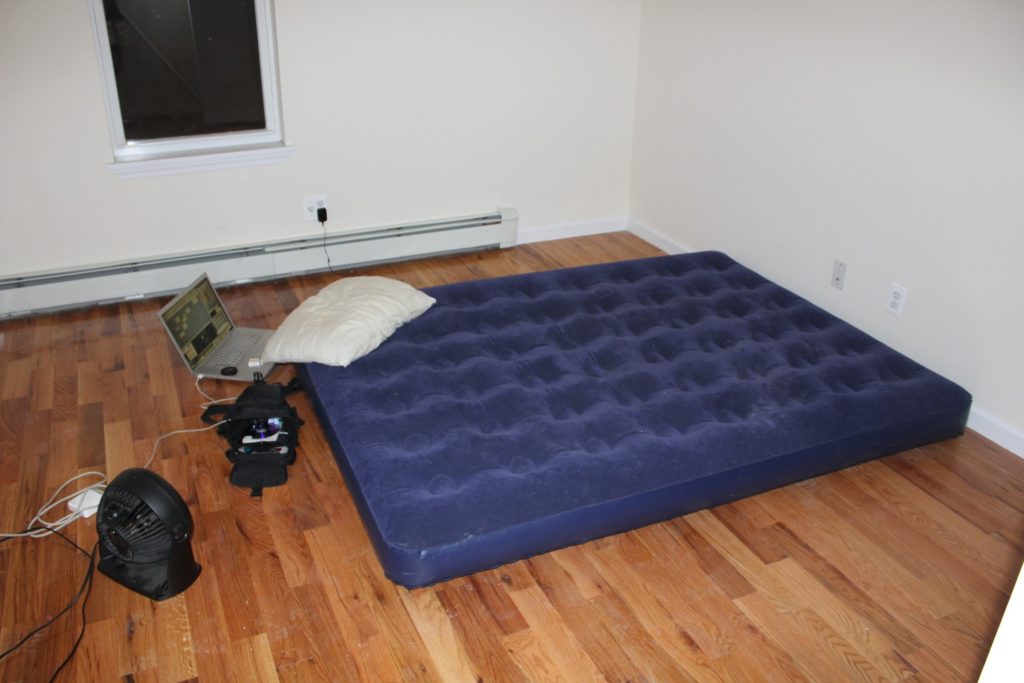
10 years later, my biggest question is: why did I take this picture?
Taking that job ended up being a life changing decision. After some sleepless nights, the event went well, and I worked with them on another event project for Spin Magazine about a month later.
I joined Josh and Layne at Fake Love as their first full-time employee in the spring of 2011, and things started to get busy quickly. We won several Cannes Lions for our contributions to Google's Project Re:brief, got several other notable awards including AdAge’s Agency of the Year Northeast, and then got acquired by The New York Times in 2016. It has been a whirlwind journey. We had incredible team members that put out amazing work over the years, and I’m so fortunate to have been part of it, especially to have a place that has grown with my own career path.
I have a lot to say after 10 years and I can't hit it all, but - here are a few of the things that I'll carry with me:
Here are the TL;DR bullet points I cover below:
- Fake Love showed me the importance of making technology a core component of the creative development process
- Fake Love helped legitimize creative technology as a career path for me (and others)
- Fake Love demonstrated the value of investing in your community
- Fake Love showed me the importance of theater for experiential work
- Fake Love let me take risks and learn from them
- Fake Love showed me the importance of a company that invests in people’s personal projects
- Fake Love showed me that lasting impact comes from appropriately using technology to facilitate real connections with people
- What's next for me?
Fake Love showed me the importance of making technology a core component of the creative development process
The thing that is truly special to me about Fake Love is that creative technology was always part of our core identity. Creative technology wasn’t something flashy to be tacked on at the end of a deck or something pushed by an innovation lab tucked into the corner of a larger organization - it had to be woven into every idea. Integrating creative tech from the start ensured that we could move as swiftly as we needed to keep up with the rapid pace of production - we often had one chance to get things right, and that meant keeping creative and technology as in sync as possible instead of just throwing things back and forth over the fence.
It also helped that Layne, the CCO, and our creative team understood the power of technology and when to use it - and some were coders themselves. As a compliment, our technologists often came from a creative background. This cross communication also allowed us to apply technology in clever ways that often felt more timeless than just working with whatever the trends were (although, don't get me wrong, we participated in trends as well - people gotta eat).
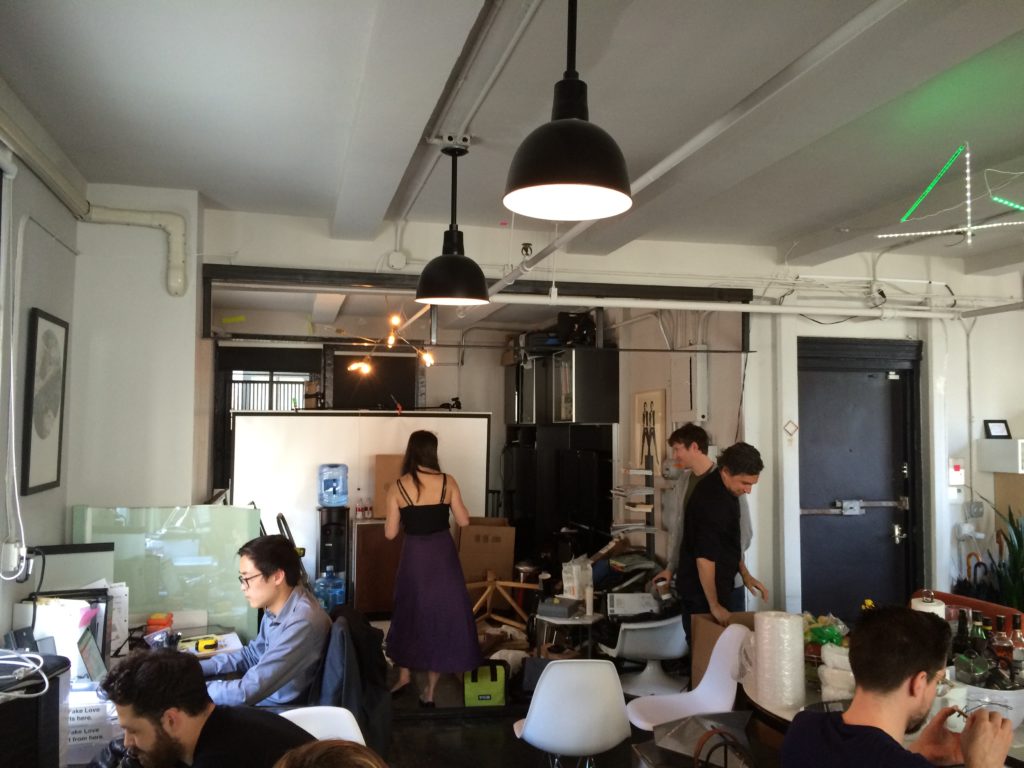
Fake Love office in 2014 at 36 E 23rd st
Fake Love helped legitimize creative technology as a career path for me (and others)
When I graduated school in 2010, a career as a creative technologist was not really an established thing, and I had no idea what to do with my skillset. It has been amazing to watch the field mature and grow over the last decade and to feel like we had a small part in helping with that growth. We absolutely weren't the first to the game and owe a big debt to other groups and individuals that came before, but it was a much smaller professional field 10 years ago. My first job title at FL was actually "Creative Visualist" because I had come from a background of using software to do live concert visuals and making music videos.
As the years have gone on, it's been great to feel like I've been able to find a niche of creatively solving problems with technology. It has also been humbling and encouraging to have rising students and people of other industries reach out and ask how they can get involved in a field like this. For more on that, check out my advice for creative technologists.
Fake Love demonstrated the value of investing in your community
Let me be clear - I do not think that Fake Love could have existed and thrived without the open source software created by artists, especially openFrameworks and Cinder.
I would wager that a large portion of similar small shops and larger agencies during the last 10 years (and still now) also leaned heavily on the efforts of the open source artistic community.
Involving Fake Love with the creative technology and digital artist community was a crucial part of what made us ourselves. We needed to stay connected to the creative technology community, not only to find new talent to execute ideas and be exposed to new technologies, but also to help give back to that community and help it grow.
We hosted many creative technology focused open mic style meetups and events over the years. We first held them for openFrameworks in 2013 in our tiny first office, and then expanded it to just the general arts and technology community as toolsets grew broader. Our last event had nearly 60 people in attendance, and it was great to have a company that would offer space to something like that.

openFrameworks meetup at Fake Love in June 2014 soon after we changed offices
Of course, we could have done even more to give back, but we tried to find ways to contribute when we could. We released as many parts of projects to be open source when possible. Additionally, so many of the creative tech articles I've freely published over the last decade are from my direct experiences and learnings at Fake Love. I always found that we got back more value from releasing code and knowledge than making something and keeping it to ourselves. We also tried (and sometimes succeeded) to get donations to organizations and individuals that made things that helped us get our work done. I would encourage anyone with a company (that is able) to make sure they re-invest, both monetarily and with direct time contributions, in the communities that help you drive so much revenue. Commercial tools like TouchDesigner and Unity are great and have a large market share these days, but there is something to be said for fostering the organic growth of open source communities and toolsets.
The final point I'll make on this, while working at Fake Love, I got the pleasure and honor to work with some of the finest creative technologists, creatives, artists, and producers and other folks in the business, and definitely in NYC. The roster of talent that came through the doors is remarkable, and I want to thank all of you for the incredible work you helped bring to life with us over the years.

The last Arts+Tech meetup we were able to host at Fake Love in October 2019
Fake Love showed me the importance of theater for experiential work
Experiential projects are theater. Even if the project is just a screen and a button. You're always asking the audience to suspend their disbelief and buy into the illusion being built. You're transforming an event space into a virtual playground. You are a performer who pretends to know how all of this technology works for your client and the audience. The client is like a VIP audience member who watches from the front row but can also go backstage.
In 2012 we took our first big company outing to all see Punchdrunk's Sleep No More together. Punchdrunk's immersive theater approach was highly influential for us, and Sleep No More was a consistent reference point for the kinds of experiences we sought to create. Many of our pitches were driven by questions like: How could we create a space that gave people the freedom to create their own path through an experience rather than push a prescriptive narrative? How can we use technology to mediate parts of the story? (You can read more of my thoughts on this and how it relates to video games in this post).
This lesson also came up early in our journey. We worked on projections for a project for Shen Wei in 2011 called Undivided Divided. It involved 60 dancers in squares spread over the entire floor of the Park Avenue Armory for the duration of the performance. The audience didn't watch from afar, but rather they were invited to be voyeurs and wander in between the dancers up close. No one got quite the same experience as anyone else in the audience. It was one of the most unusual and exciting shows I've seen.
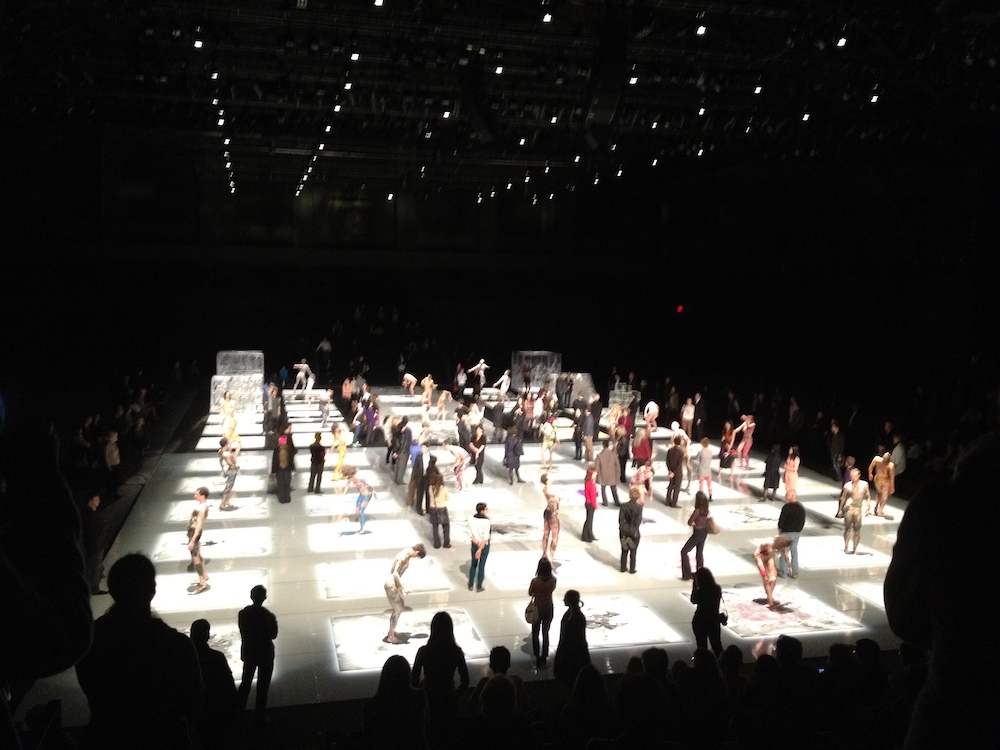
Shen Wei's Undivided Divided at the Park Avenue Armory in 2011
Many projects were pitched (but I can't recall one that fully landed) that would have relied on a sort of Wizard of Oz approach of having people interact with a piece of technology, but having a human actually mediate the interaction behind the scenes to add a bit of extra magic. If an event only runs for a night or a few days, there are a lot of problems that can be reliably solved by paying someone's day rate to pull tech puppet strings rather than spend weeks and thousands of dollars on a more unreliable but automated solution.
Looking at experiential as theater helped remove the frame of "advertising" and moved us towards creating a complete experience. The approach also helped us draw on the more unusual approaches to theater that we stumble into in art and life in general.
Fake Love showed me the value of taking risks
There is always a solution. Always.
The only problem is that some solutions have much larger risks than others.
We took on a lot of projects that just seemed completely crazy at the time, but we managed to pull them off. Two week turnarounds, unrealistic deliverables, unproven technologies, and technologies we just didn't have experience with yet. (Pro tip - make sure to have an amazing group of producers to help pull that insanity off. And have bosses that understand that mistakes are a necessary part of the process.)
I always look back at one of our first successful projects where we had to embed screens in a vending machine and hack it to actually dispense soda cans when it received a remote signal from a web banner. I had no clue how vending machines worked on the inside - I missed that class in school. We bought a machine, rented a space, and I opened it up and crossed my fingers that my limited physical computing knowledge would help me out.
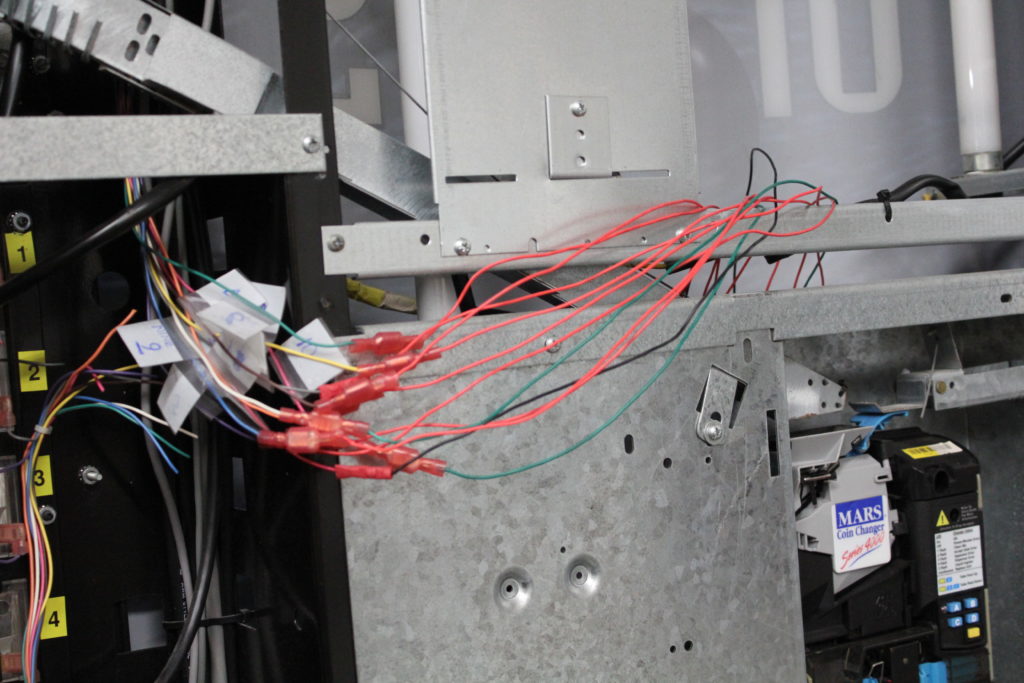
Look at this pro vending machine wiring job I did
Long story short, we figured it out, the client was pleased, and 3 weeks later we went to Cape Town, South Africa to do it again on another vending machine for the same project - how different could South African vending machines be?
Very different, it turns out. The same solution wouldn't work, and we had very limited time.
We saved the day by quickly searching for relay switch circuits and making a trip to a very well stocked Cape Town electronics components store. If that hack hadn't worked that day, the whole project would have been a flop, there would have been a lot of disappointed people that flew all the way to Cape Town, and I suspect you wouldn't be reading this right now.
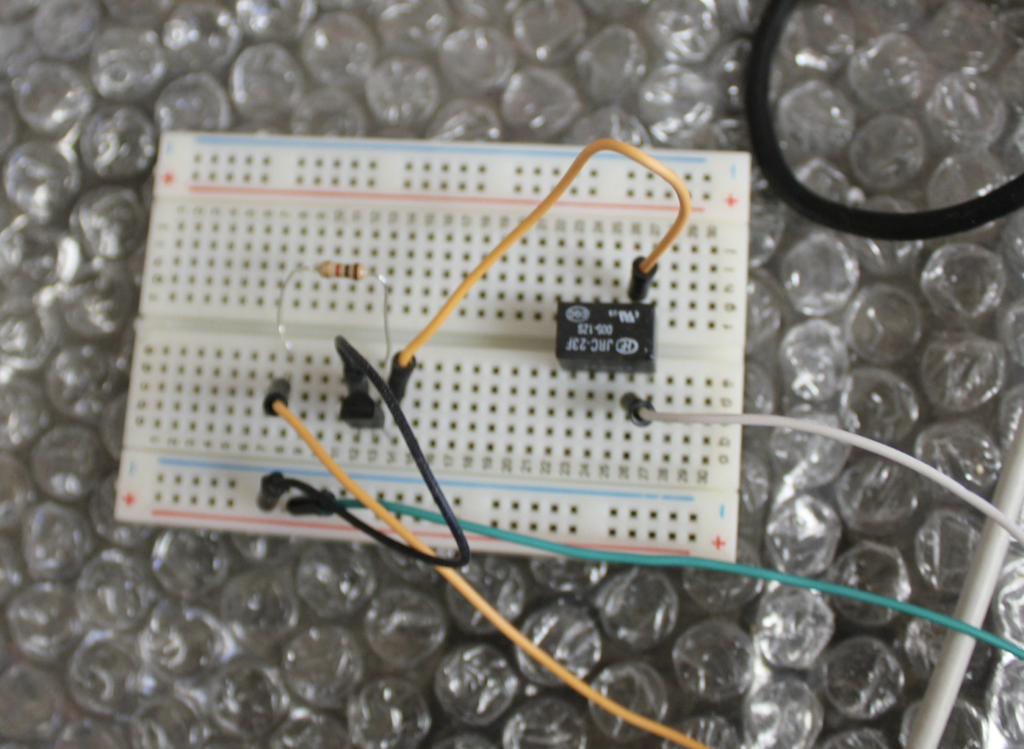
This is a picture of the circuit that saved the day
Anyway - you can figure it out, even if you don't have a clue where to start at first. I believe in you ?
Problems don't need a solution, they need a team to commit and carry out that proposed solution.
In addition to taking chances on projects, we learned a lot about how to mitigate risks. If you can't change the timeline or project behavior, you have to adjust yourself to work with it. We became very good at researching everything we could up front. Calling vendors, asking friends, finding precedents, testing hypotheses - everything was run like a science project. It's so easy for a project to be brought low by just one piece of hardware not being able to plug into another - never wait to test on site. We had risk mitigation documentation we would write up before going live that described the biggest areas of worry and what our action plan would be if something broke down.
The lesson was: take risks, but be smart about it.
Fake Love showed me the importance of a company that invests in people’s personal projects
We worked in so many disparate disciplines and it became essential that we keep ourselves inspired in things outside of work. A random exploration of an art project or a technology on company time could suddenly become crucial on a a real paying project. In later years, we made sure to carve out time every month where every employee (not just the technology team) was invited to share personal projects. Those sessions helped us foster community among a group of artists and makers and learn more about each others varied skillsets.
While at Fake Love during work hours, I made 2 iOS apps that released on the store (a game and a funky camera filter), made a big live visuals app for a huge concert with Phantogram, made a lot of demos for the office, and explored a ton of different technologies to find the good stuff. None of those were paid work or anything that seemed particularly money-making at first. However, every single one of those personal projects taught me something that became invaluable on a big paying job later on.

A random output from our 2012 Crystal Eye iOS app
I don't think you will learn and grow in the same way if you only focus on the client work, particularly in creative and technology. It is also unrealistic to expect yourself to do all of that work outside of work hours, and the company should understand the value of investing time or resources or attention for people's experiments. The biggest challenge, of course, is balancing the need for research projects and doing the paying work. Working with your whole team to identify how research projects can become something funneled to a client project is definitely a key approach if you can get it right.
Fake Love showed me that lasting impact comes from appropriately using technology to facilitate real connections with people
A lot of our best work, and our most memorable work didn't feature a technology in the headline. Our best work highlighted people and the connections they can make and the tech receded into the background. If the "innovative technology" utilized in your experiential work is the most interesting thing about it, there is a very good chance the project itself isn't actually very interesting.
We did a ton of projects that used cutting edge technology appropriately, and a handful of projects that just used trendy technology because novelty offered a false sense of robustness to an otherwise flimsy concept. Those projects often did not stand the test of time. One positive out of those exercises, however, is that there is a lot to be learned by what doesn't work for those novel technologies (just as much as what does work).
Sometimes all a good project takes is a display, a camera, some electronic doo-dads and a nice setting. Keeping our approach simple and (usually...) uncomplicated helped us move quickly, but also tended to highlight the concept more than the tech.
What's next?
It's definitely a difficult thing to move on from a place you've put a lot into over a decade. I'm taking things slowly and trying to have a lot of conversations with people I've worked with previously or people whose work I admire. I am actively looking for my next spot that shares some of the values I spoke about above, so please reach out if you would like to catch up or connect.
During other times, I have my 11 month old daughter, Sola, to keep me busy ?.
I also have a lot of writing projects that are built up in my queue. As a longer form project on my mind, the experiential/creative scene of NYC from 2010-2020 is definitely something that isn't that well documented and could use more of a record. That being the case, I would love to write up a bit more of a history of Fake Love from my perspective and maybe highlight some of our case studies in more of a book format. I also plan to update and create guides to various creative tech things. I'd like to try some other new art experiments as well. It's a whole wide world out there!
I'll close out with some one sentence descriptions of some of our best work at Fake Love - thanks for reading! Get out there and keep making great work.
During Fake Love's time:
- We connected the world with custom vending machines (for Google/Coke)
- We made a life sized racing video game (for Lexus)
- We helped the hearing impaired experience a concert (for 7up)
- We helped phones swim underwater (for Samsung)
- We used innovative display technology to bring people together to have difficult conversations about the workplace (for SHRM)
- We made old technology new again (for Levi's)
- We highlighted the impressive design elements of a new vehicle using contextual augmented reality (for Kia)
- We helped people represent their neighborhood in a competitive game of pong (for Amex)
- We made a fantastic visual world come to life with set design and contextual augmented reality (for SK-II)
- We had people explore the often challenging emotions around finances through physical interaction and poignant visuals (for Umpqua)
- We celebrated important but overlooked figures in science through location specific augmented reality statues (for IBM)
- We explained complex technological concepts in a an approachable way in a personal immersive environment (for IBM)
- We surprised retail shoppers with a reveal of new fashions through augmented reality (for Nordstrom)
- We created a projection mapped world for 50 dancers to perform in (for Shen Wei)
- We revealed the hidden side of microbes in your home (for Dyson)
- We built an interactive magnetic wall that helped people understand their own state of flow (for Dropbox)
- We tracked a conductor’s baton to generate visual music for a show at Carnegie Hall (for the NY Pops)
- We put people's running skills to the test in a massive game (for Nike)
- We made a space that explored the past and future of wearables (for Intel)
- We designed and built an experience to clearly communicate the complex side of networking (for Nokia)
- We helped people experience the visual side of music (for Sonos (with the help of Red Paper Heart) or Master & Dynamic or NY Pops)
- We celebrated a brand's impact on society and culture (for Twitter, or Nokia)
- We brought fan love directly to the Star Wars red carpet (for HP)
<3
Finally, here is an image made as a reflection on moving on from Fake Love by our amazing concept artist, Kurt Huggins

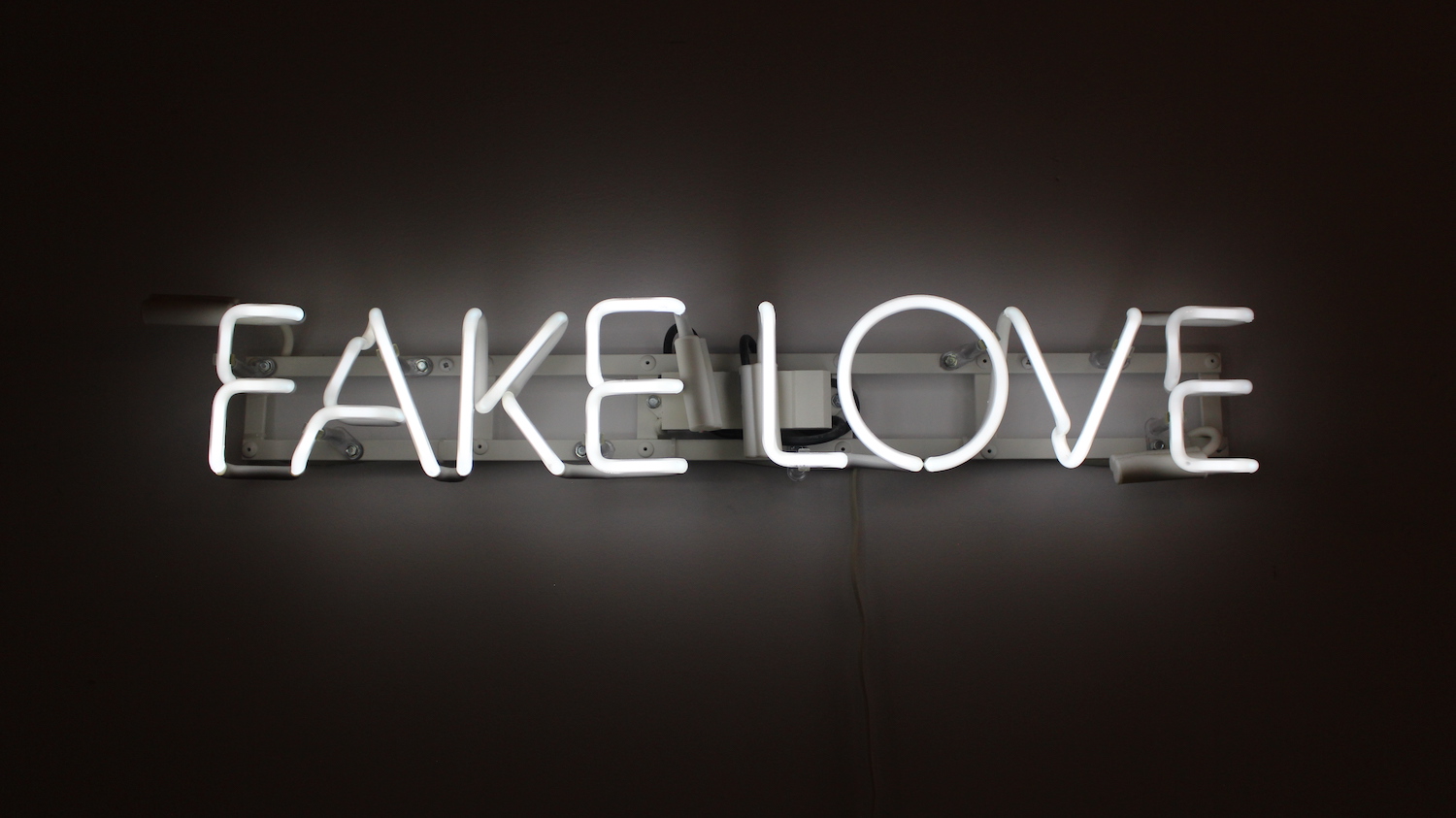
Blair, this is humbling, heartbreaking, and heartfelt. I am overwhelmed with love for everyone that made this dream possible. We changed the world of design, without knowing it or trying to- we were just ourselves, always rolling an impossible ball up an impossible hill- and always succeeding. It was an amazing time, and I wouldn’t change it for the world. Real love for Fake Lovers. xoxo, layne.